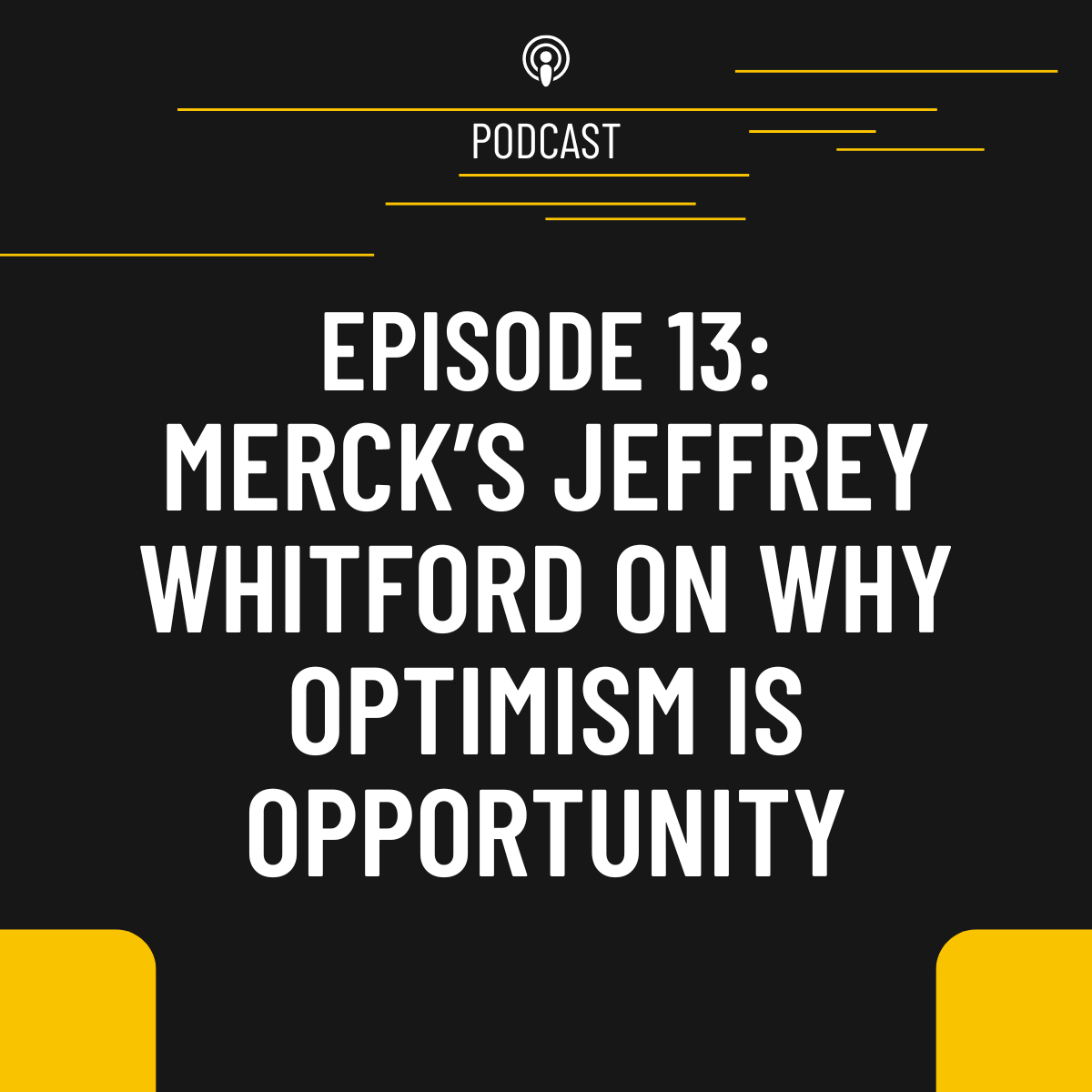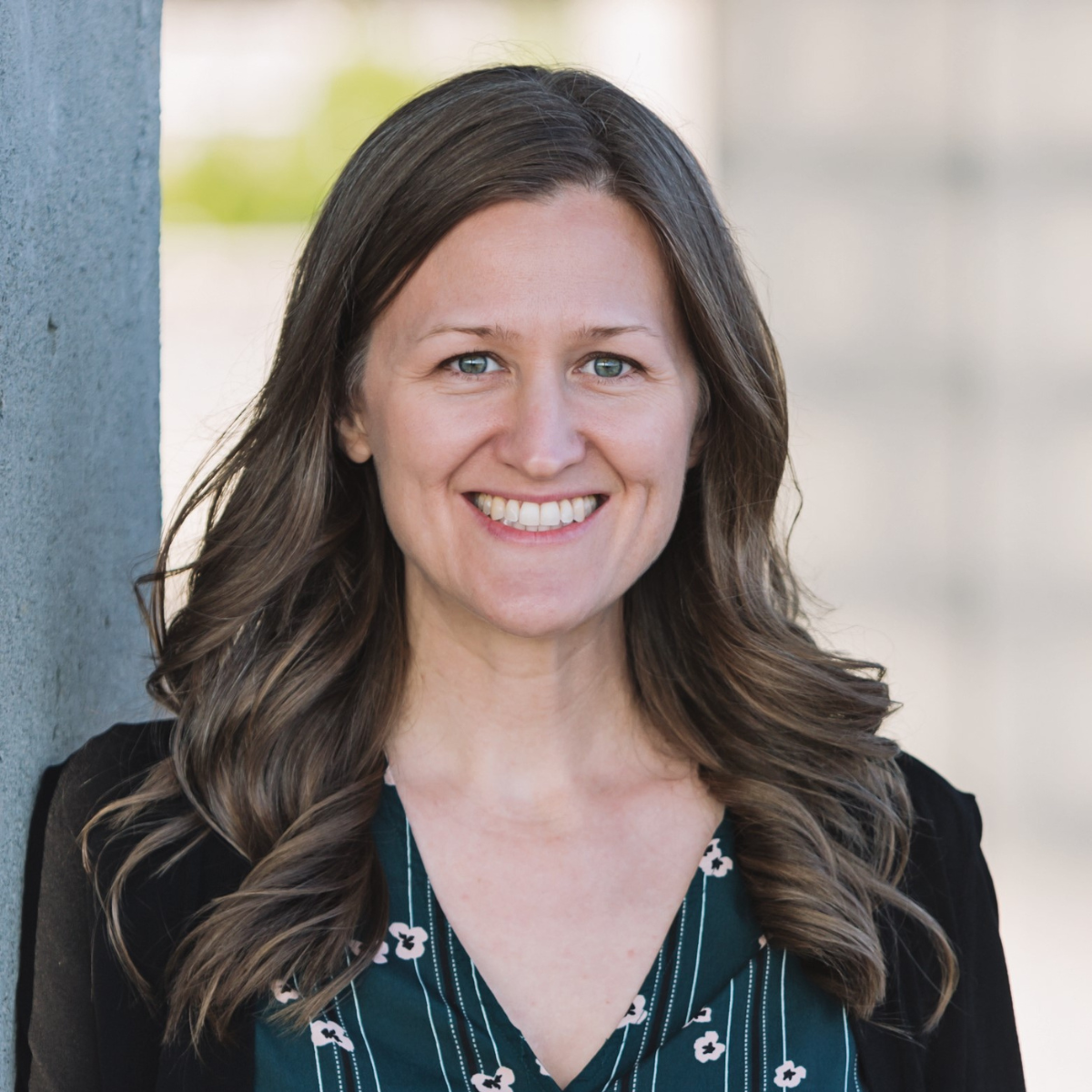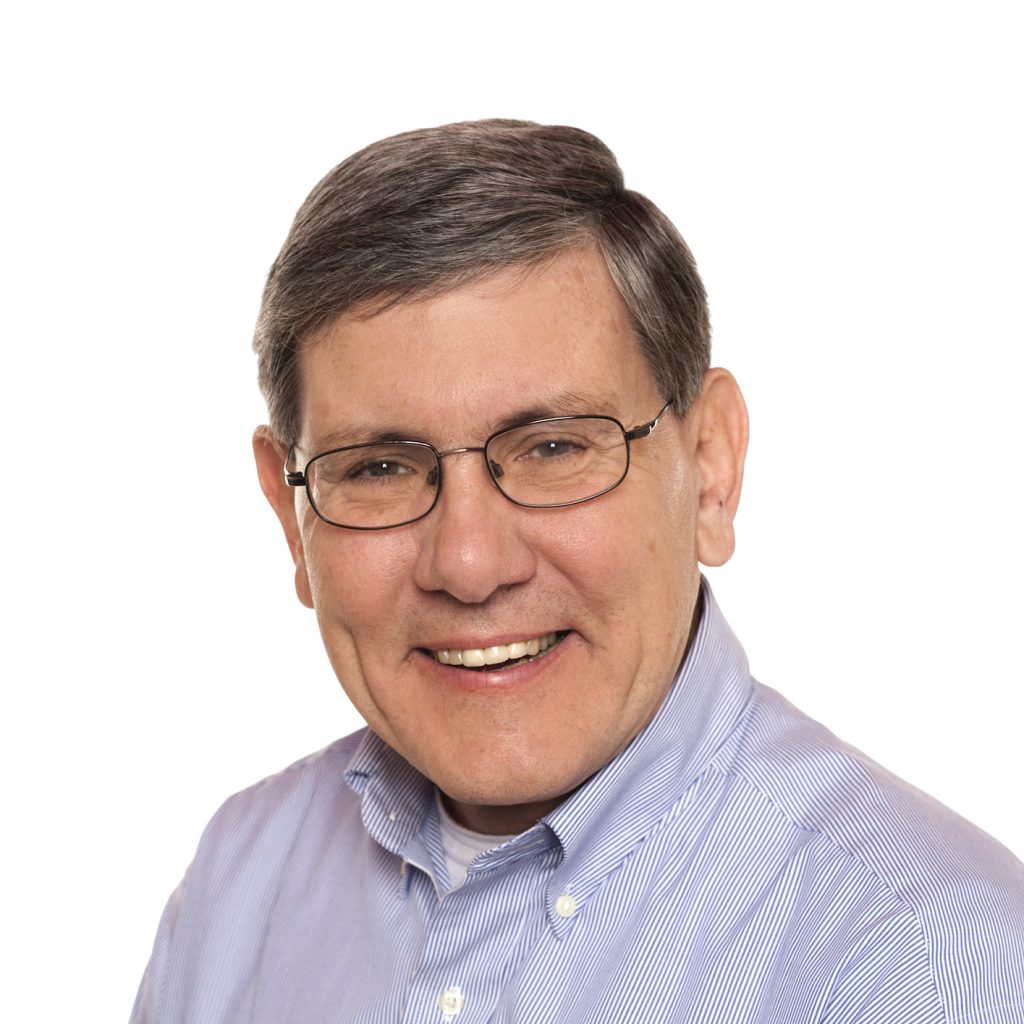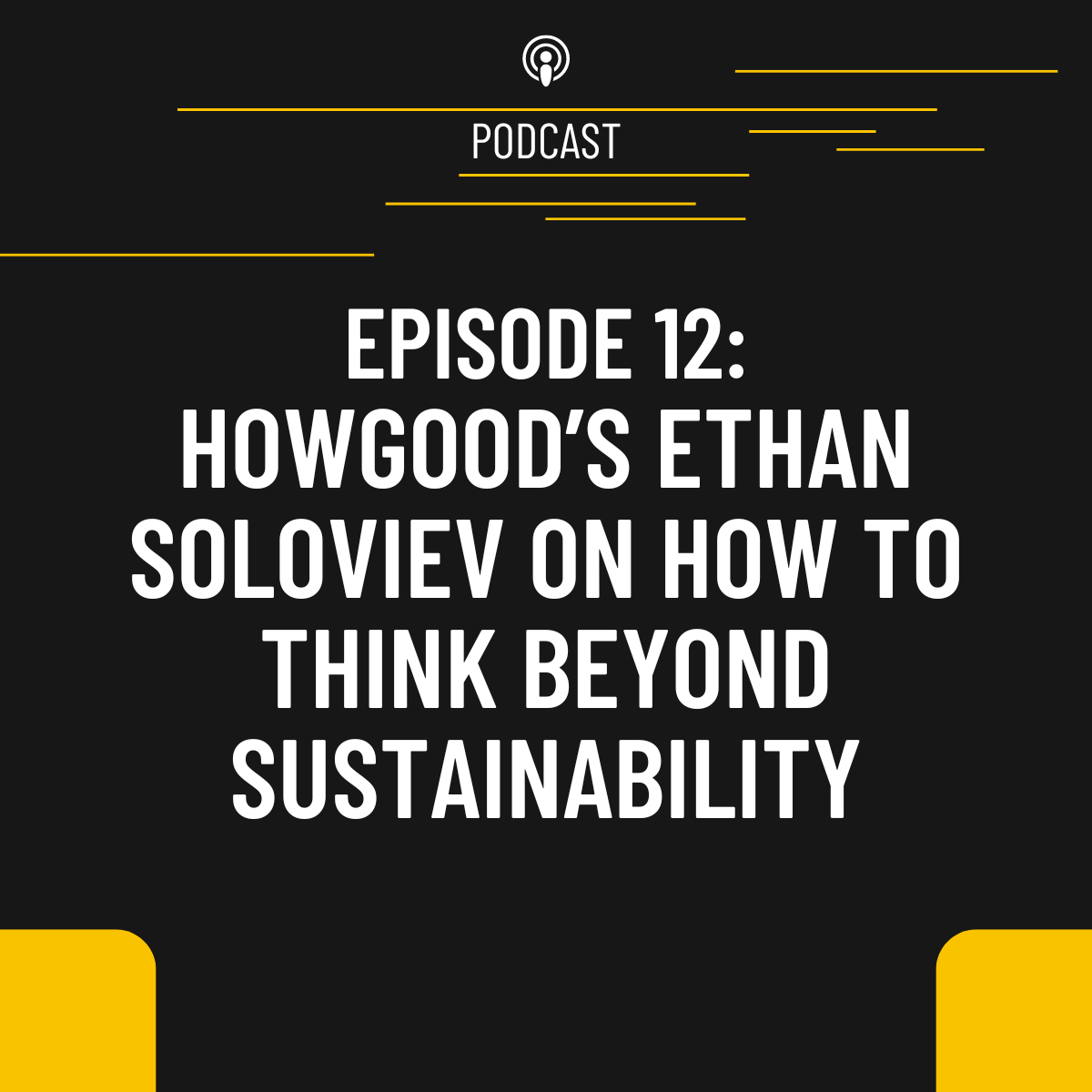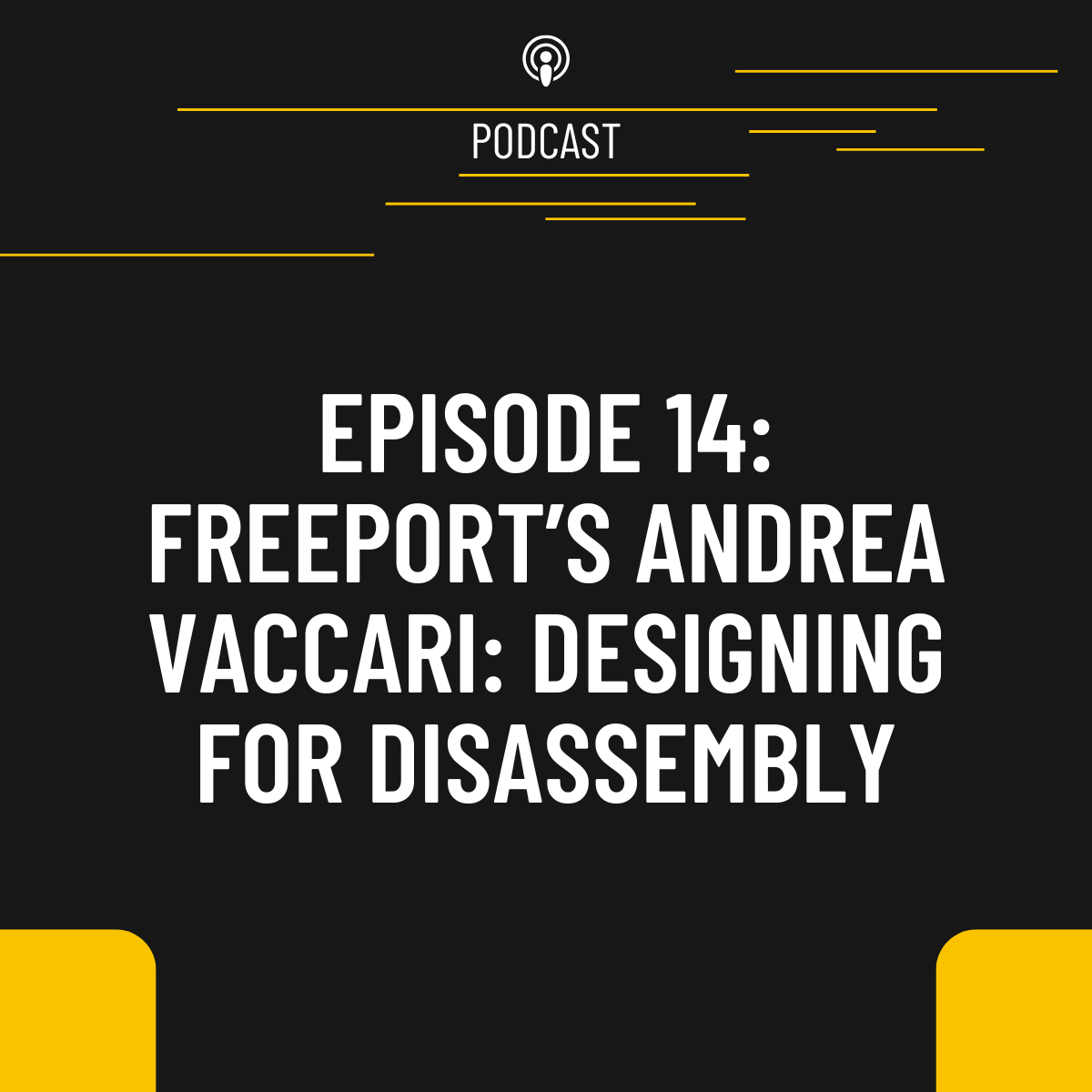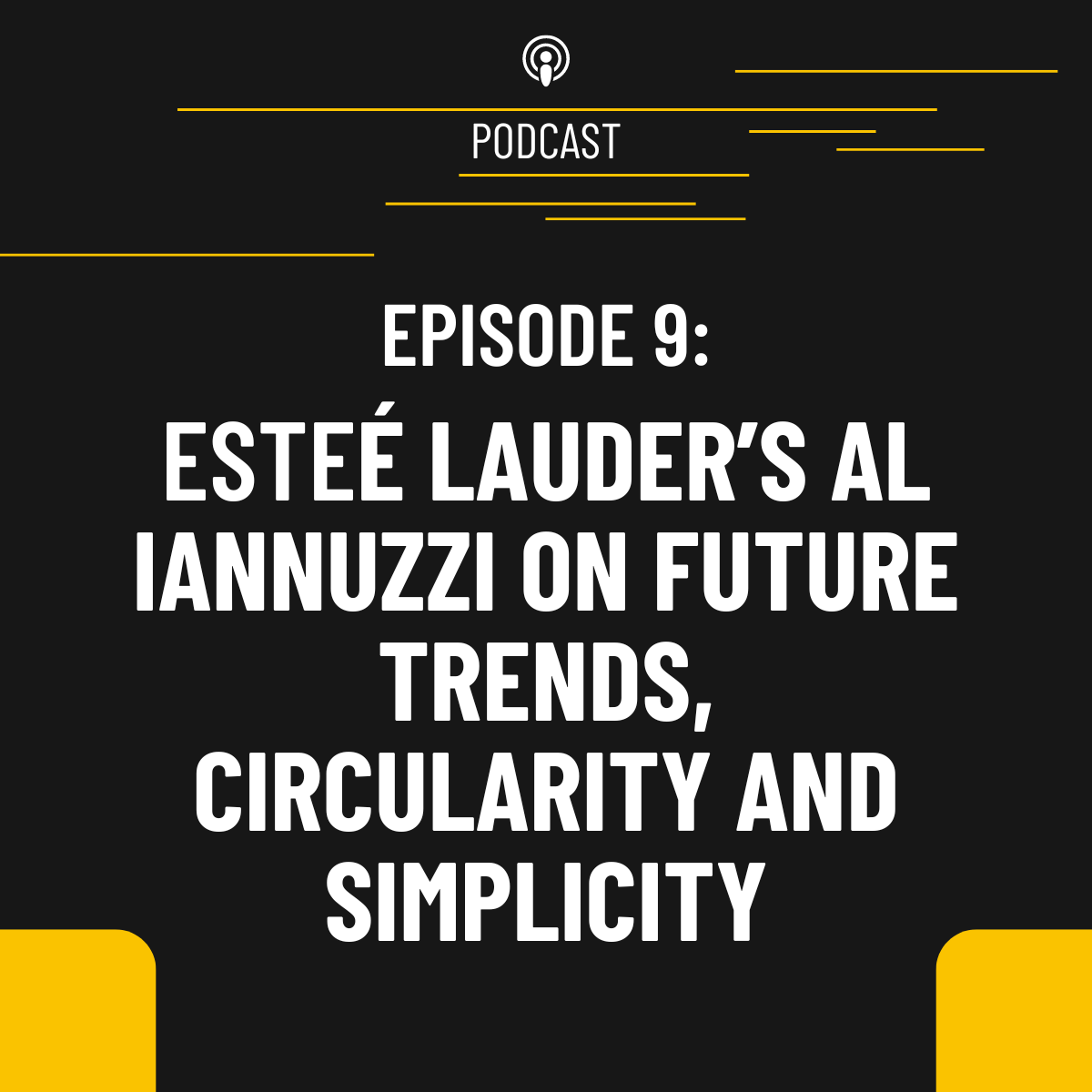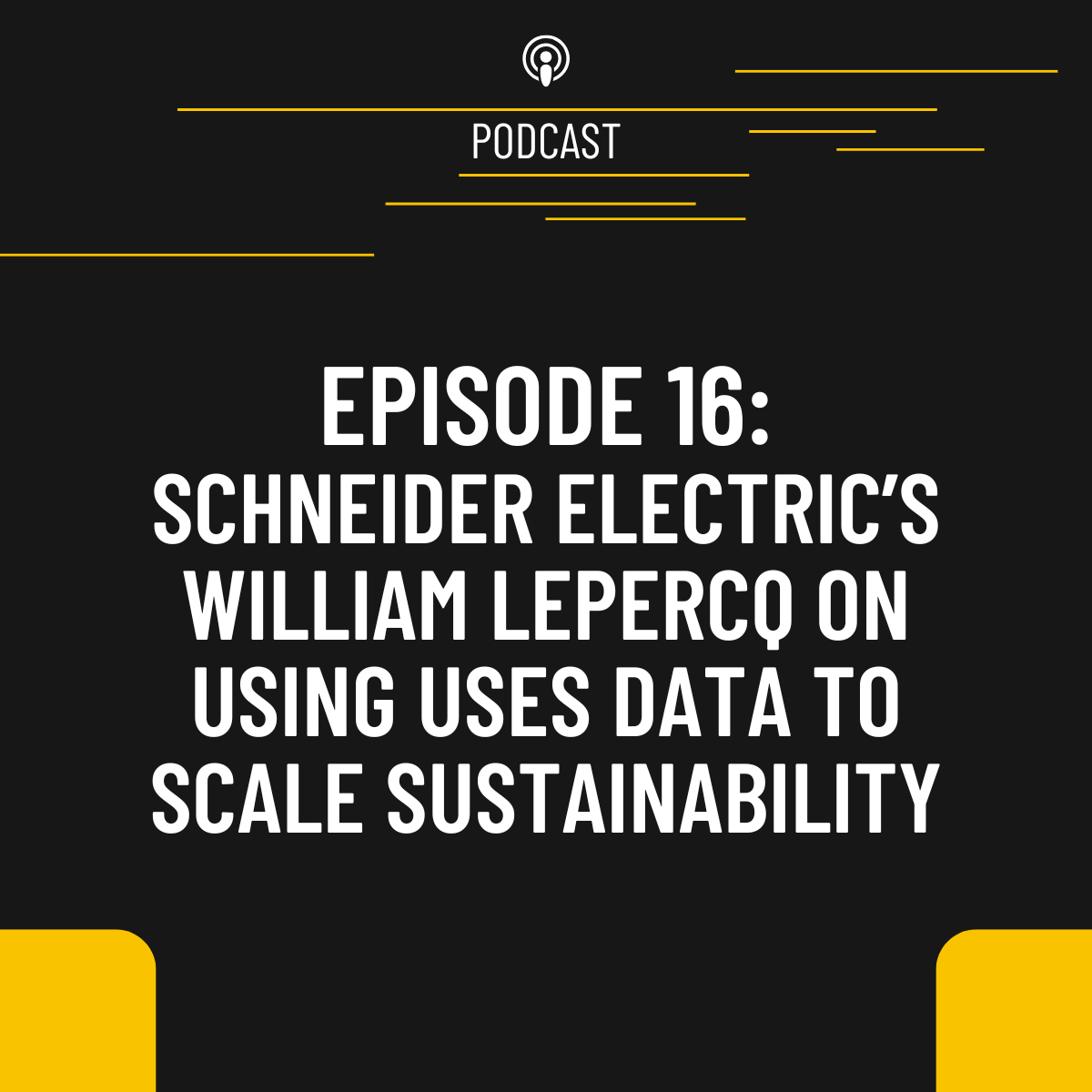Show Notes
Merck's Jeffrey Whitford joins the team for episode 13 of Five Lifes to Fifty. Jeffrey is Vice President of Sustainability & Social Business Innovation at Merck (known as MilliporeSigma in the US and Canada since Merck's acquisition of Sigma-Aldrich in 2015), and has a deep background in education, communication, advertising, marketing and strategy. He uses those skills to develop and execute compelling platforms to showcase his organization's efforts in Corporate Social Responsibility.
Today, Merck/MilliporeSigma offers a range of more than 300,000 products to support the life science, biomanufacturing, and biotechnology sectors. These products have applications in biotechnological manufacturing and development, laboratory research, and pharmaceutical drug therapies.
In this Episode
Shelley: Merck is a global life science company. Tell us more about the field you're in and the sustainability culture at Merck.
Jeffrey: Yeah, absolutely. So, we are one of the places that most all scientists know of. If you're not in science, you may not have heard of us, but basically we are the one stop shop for scientists to get all of the materials they need to do discovery R&D and then manufacturing for things like pharmaceuticals, drugs, therapies, treatments. But also, certainly if you're in academics, you're doing academic research, we're a place that you're going to go to. But we also do other things like testing. So, if you need a standard to look at the quality of something like what clean dirt is, well, we're the people who make clean dirt that you actually measure against. So, we have such a wide array of things that we're involved in. Like I said, you may not know about us, but we're probably interacting with you in one way or another throughout the day and hopefully helping you make your world a little bit better. [00:40]
Shelley: And I understand that sustainability is deeply embedded into your process. Tell us about how sustainably gets embedded into your product development process. [01:33]
Jeffrey: One of the things that I was given as an instruction, in terms of our ambition regarding sustainability was we don't want this to be just a showcase product here or there. We want this to be something that is systematic within the organization. So that was the guiding light - I was told you need to make it systematic. So, because of that, we looked at the different ways we could go in and address systems, because that is the key to change. So, we try to find where that lever point is in each of our different processes, and that's where we go in. So, for product development for us, we use our product development process. We have a system called accolade, where everything is tracked and driven through. That was the point really where we identified to say if we can get sustainability embedded there, we're going to start to make the change or the transformation to a product portfolio. We have 300,000 products, so it's a big challenge in front of us to think about sustainability across the board. But ultimately that's the place where it starts when we think about the products themselves. I think for us, that's really what we've been thinking about is where are those key lever points that you've got the ability to then take more control into the process and give people guidance about what we're looking to do and the changes that we need to make. [01:43]
Neil: Jeffrey, 300,000 products, how do you start? [03:00]
Jeffrey: I cry a lot. No, this is the hard part when you think about the volume of products that we're talking about, is that we don't have one big thing that you could address and so that creates for us a challenge to say where do you start to focus? And one of the things that I think we've learned over time is you start where people are willing to start. When you've got people who are willing to go, that's where you start making these inroads and then you build and you learn. One of the things that we found out was if you look at something like solvents - this is a commonly used product, so if you're not familiar with that term, if you think about acetone or nail polish remove is a great example of a solvent, there are a lot of cleaners, so it is a relatively common material. But those materials are typically made from fossil fuels. And with the statement of fossil fuels, you know that there's going to be CO2 related to that. So, we've been looking at the ways that we can integrate bio based materials into that. But the bigger factor is that equates to about 10% of our scope 3.1, and scope 3.1 is purchased goods and services. So if we think about where impact lies, more than 60% of our footprint sits in scope 3.1. So, when you get 10% of that portion, and I apologize for all the percentages of breaking things down further, but that's one of the biggest pieces of the pie that you can actually get at. So, Neil, that's one of the things that we start to then look at is where can we have as big of an impact? And I say that with limited relevance. But where can we have big impact and then focus in these kind of bigger strategic moves of the changes that would need to happen and then start working our way out to see what kind of knock on benefits exist. [03:05]
Neil: You said something very interesting. You said we start where people want to start. What's the drivers that make them want to start? [04:47]
Jeffrey: Yeah. With 28,000 people you get a range. You get people who are eager and who sustainability really matters to. It may not be their core job, but it's something that they're interested in and they realize, they make that connection that they can have an impact and they just need the guidance and the understanding of what actually can they do. So, part of our work is to encourage people because even though as much messaging as we send out into the organization, people are like, is it okay for me to proactively work on sustainability? Yes. But then it is really helping those people with how do you quantify? How do you think about the right areas to make changes of your product lines? Where are the hotspots and what are the things that we're trying to accomplish? So, we identify those people. They kind of self identify themselves; they reach out and they're like, hey, I do this and I would love to figure this out. So, you grab those people early on because they are your flag bearers who then go out and then become the people who, if they haven't had a successful experience, we convert them and then they become the messengers to their colleagues in those areas to say, hey, this actually wasn't that bad. We think a lot about like the customer service aspect of this because we can't control, we can't tell people this is what you're going to do. But what we can do is we can influence. And so we're very effective influencers and we build those relationships, our jobs get a lot easier and then we also see those results expand. So I think it's really about the experience, Neil, that we give that R&D scientist to try to make it a really welcoming, interesting environment that they can succeed in because that's going to create a return and expansion. [04:55]
Jim: What are the roles of these people? Are they the product managers or are they procurement or they're the marketing? Could you talk a little bit about the roles of those people? [06:34]
Jeffrey: So, one of the first people, and my team really reminds me because I certainly focus on the R&D scientist, but it's really important because it is a complete ecosystem of people. But mostly I think the focus here becomes the R&D and the product manager. So those two people become the key elements there and what we're doing with procurement, because they become a factor of this. But what are the things that we're looking for them when we do new material, innovation, sourcing? What are the things we're looking for? How do we start building a wider bench? So, I'm not going to say not important, but a lesser, slightly different role. But the R&D scientist - you are the person who really is responsible for developing and technically making this work. So, in my viewpoint, that lens, that's still a really critical person or people to make this move. But then the product manager has to figure out the positioning in the market, really reinforcing a voice of customer, and making sure we're feeding in information about why this matters. What we find, and it's very interesting, is the individual scientists, so our customer, while they may care about the environment, and I think we would say that from a persona standpoint, you see this interesting shift start to happen when it comes to them executing their work. Because if you add another layer of complexity into the completion, wait a minute, now you're messing with the scientific process and they've got these established methodologies or processes that they follow, and those work exactly how they were lined out centuries ago, a decade ago, whatever it was, two decades ago. And this was a really important thing. So your customer, your bench scientist, for instance, may not be voicing that specific desire for sustainability, but if you go then to that person's colleague who is in procurement for the customer, they're going to be saying, we need you to figure out how to fix this and change this and reduce the impact. So it's making sure that our product manager is getting a wider range of perspectives and hearing all of these things to understand that we need to balance and figure out the efficacy of the product, but also the sustainability as a component of it as well. [06:42]
Neil: This costs money though. This costs time. Right? If someone has a good idea and says, hey, you now want to pursue this, you say, yes, let's do that. But there are always competing priorities. What is the driver for those to be prioritized within your organization? Is it customers? Is it regulations? What is it? Is it access to market? [08:49]
Jeffrey: I would say it's always customer and I think we also would look and say it's competitive advantage. It’s my belief, and I have a very different view if you talk about regulations, I think a lot of people started off in this space and there's still a lot of people who work in a risk based mindset or a risk based approach. And I just, I don't take that view. My view is literally the opposite, as far as you can get part of the spectrum where it's really opportunity or entrepreneurial based viewpoint. And the reason why that matters is because all of those regulatory things will be taken care of because you are not just trying to go to the lowest minimum to meet whatever's being set. You're saying we can set the threshold over here and then guess what, we're going to comply with and we're not going to have to worry about the regulatory aspects because we're thinking about how you do this differently. But then, Neil, the important part that you brought up, which is cost, right, and I would probably be your least likely candidate. If you go back to some of my teachers in high school and college, they would be like, there's no way that guy's doing numbers and business cases. But I am now just a huge advocate and proponent for really having a clear business case. And I think what we have found is that there's a tremendously remarkable business case for sustainability when you actually start and do those calculations, because you look at the competitive lift that can happen from a sales standpoint. You look at reductions of manufacturing cost or material selection cost and some things, right? There are trade offs of course; I'm not going to sit here and say everything is going to be a win. But we really operate from a debits and credits mindset where we're creating a ton of credits in the system in terms of savings from energy efficiency, other things that when we come back and say, okay, we need to use a debit over here, it's not going to be huge, but we want to make an investment because that's going to be a strategic advantage to move X, Y or Z. And I think that piece always comes back to there are always trade offs, there are some things that are just going to be more of an investment, but there's other things that you're going to find savings. So, in the worst case, you come out at a wash. And I would say in a lot of cases you probably come out on a plus side where sustainability is contributing back to the business in a meaningful fashion. [09:08]
Neil: Do you have any examples of that, any success story that you could share? Because I think a lot of, a lot of product managers that we've spoken with, they're in the process of getting to that final result, winning the gold medal for creating a successful story. And there are not so many, right? There are few. But it's always an inspiration to see if someone has actually done it and made a success out of it. [11:24]
Jeffrey: We started a program and this was at least a decade ago, in very early days, and it still continues to this day because of the business case that surrounded it. We have a reengineering program, so we look at our products and we look and say, could we do a synthesis, could we do a manufacturing process differently? Because when you look at that backend of it and you can take a product like beta amylase. So, beta amylase is a specialty biochemical that uses sweet potato as its raw material. We were able to change the manufacturing process of that material and eliminate two thirds of the raw material. So, we used to use 6000 pounds of sweet potatoes. We now use 2000 pounds of sweet potatoes. We used to use around 1800 gallons of acetone in the manufacturing process. It's now an aqueous based process. So we eliminated that as well. And then we eliminated the need for increased energy or electricity to raise the temperature and the pressure to make the reaction occur. So, because of this, there's definitely savings and time savings on the manufacturing side that we bring to that. And as I said, 300,000 products. So this is, you know, relatively small if you look at it, it's not a huge product, but still it provides benefit back to the business. It opens up manufacturing capacity because it doesn't take as long. All of those things have benefit, but those are the quantifications we put around them to showcase, hey, here's how we're doing this differently and by the way, here's the sustainability benefit as well, because you've eliminated this, you've made that aspect more efficient. Oh, by the way, I forgot to say the product is actually 15% more pure than it was before, so it's even a better product. I don't just have that one example. We've got a lot of these and I have a complete belief that pretty much anything is possible if we put our minds to it and look at these things in different fashions. And I think that's just a great example that we use kind of time and again. But we're coming across things left, right and center about these types of things that they're remarkable stories and that gives me a lot of great fodder to be able to share. [11:46]
Neil: Are these all serendipitous innovations or has this been integrated int the stage gate process that you typically see in manufacturing companies? [13:55]
Jeffrey: There are certain things that are serendipitous. And I think when we started off early on, and it's kind of like I said, you work with anyone who will work with you. At that point, definitely more serendipity. And now we're getting to the point where we've gone from serendipity to systematic and we're just kind of working our way through, and that reengineering process that I mentioned is something that we're now working at how we institutionalize. That one is less process driven because once the product moves from R&D into the manufacturing systems, it's a whole different world. Certain aspects of that are not as systematic as like the R&D process because then at that point it's kind of you just manufacturing a product. We don't have a system to go back and say every four years or every five years, we're going to go back and look at these processes to say, has technology changed? Because we just have so many of those manufacturing processes, it would be a little unwieldy. But I think that's the thing, is the serendipity educates me. The education for me gives me then hints of the clues of the directions to go and what to push for. And so not just me, but the team as a whole, we've got about 40 people that are working on this, but we've become really attuned to taking those cues and those messages and then figuring out is it stable, is it relevant, is it repeatable? And if it is, then we take those and figure out how do we push them into the business to then scale and expand it so that we can make it systematic. [14:05]
Jim: I want to follow up on a comment you made a second ago, Jeffrey. The regulatory will just take care of itself and then we're going to deal with customers and competitive advantage. And right now, out of the EU and the US and others, there's a lot of new regulatory requirements that are on companies related to products. And I go back in my career, the regulatory was the first thing that needed to be done. It wasn't the ultimate positioning in a sustainability perspective, but it was a minimum that would be an expectation. [15:31]
Neil: You don't get a medal if you don't kill people. [16:03]
Jim: I strongly believe regulatory - it's going to happen. But the real competitive advantage is going to be in the market. It's going to be in your product sustainability from a business value, business case perspective. Is that the culture of Merck? That the regulatory is going to happen and we got teams in place to make sure that happens. And your role is really to take it and the people you deal with to take it to that competitive advantage to dealing with customer. Is that a correct interpretation? [16:07]
Jeffrey: Yeah, Jim, you're absolutely correct. We have a really remarkable regulatory team. Got an amazing colleague who sits in Germany and his team do such a good job and it's tough. Let's not kid ourselves. It is tough when you're looking at the volume of products and of course the regulatory spread across different markets. It's not that we’re dealing with a consistent set of information and that makes this tougher. But you know, my joke about that is he and his team have the really tough job because they're the people that are telling you no all the time and they're doing it to protect the business. It's the right thing and that's what we've got to do, and thank goodness we've got such a remarkable and strong team doing that. I get to come in with the rainbows and the sprinkles and the confetti cannons and do the fun stuff of going from here and up. But I think we're really trying to work together even more effectively to pair those elements together so we've got an even better and more attuned view on where regulatory is going, where are people driving? And it's an ever-shifting shaping environment. But then when we're able to say, okay, we're going to try to look at something very specific and if you look at maybe Reach regulations and material restrictions or phase outs, how do we solve for and then use that requirement of what we know regulatory, what those restrictions are looking at, so that when we design or bring new materials, we're looking at a broader set of information and data. Because what we absolutely do not want and want to do is have a regrettable substitution and think oh, we solved it. And this is an ever-evolving data cycle. New data is always coming out and things that have been around for so many for so long, that risk always is there. And so we try to be mindful to think about those types of frames and what people are looking at and all the different things to then guide the decisions we make about the investments to understand so we don't get ourselves in a situation 20 years from now where we're digging out of a hole that we created. It's not going to be perfect. I think there's always going to be an issue with something that we make as humans. But for us it's really thinking about how do we have a stronger set of kind of commitment from us as a business to do what's good for people and make people centered choices that don't put people at risk in the future. [16:40]
Neil: This approach kind of jives really well. You take an approach that is beyond regulation because regulation is based on what we knew, what we found out until now. Twenty years from now, I think that's the average lifetime of your product. It could be as long as 20 years that a product is on the shelf and changing that is extremely expensive to get residual and stuff like that. So by actually being better than what the minimum requirement is, you're actually defending that future potential, that future risk of a product not being viable to sell anymore. [18:56]
Jeffrey: I think what you said, Neil, is really great because that's where I am. I'm the future forward looking part and I look in the rear-view mirror to learn lessons, to sponge up information, to understand what we did before and think about the ways that we do it different in the future. And I think that's one of the great things, but also the challenging things because usually when I show up on people's door, they're like, dang it, because they know different is coming. And you know, people don't like change as humans. We're not overly fond of it. But I think that's one of the great things about my skillset and one of the things I've learned about myself is I am at my best when I'm creating things. That's when you get the best out of me that has the most impact for our organization. And so that creation and ability, I would say our secret sauce, and certainly the secret sauce of mine is the combination of innovation and execution. Sometimes people may have a lot of innovative ideas, but they can't execute. Or they're really good at execution, but don't necessarily have the pipeline. I don't know what's smiling down on us, but I think that's where we really have been able to pull this together is we see this broad array of things and I think we have such an Interesting seat within the organization. We sit in strategy for the organization. So I report to our chief strategy and transformation officer. So that gives us broad access across the entirety of the business; we're not over here in one little corner. But because we have that broad access to the business we're seeing, I'm not going to say everything, but we see a lot of things. And by seeing a lot of things, you then understand the places you can plug in and where you can have an impact and effect. And when you got the support of your senior leaders to do what you do, and because we've established a track record, I think we've backed up what we said with facts and deliverables and outcomes, people are more willing to take the time to have the conversation to think about the ways that they can make changes, because the framing that we've put on it and the results that we've showed show that it's going to be additive to their business. And that's the powerful component is when you've got reasons and compelling examples of why change is going to be beneficial for them, it lowers the hurdle. Maybe not as much of the displeasure or discomfort with it, but it does lower the hurdle of people's willingness to go through that. [19:32]
Neil: To build on that, you mentioned innovation and execution and the balance of both, I think R&D is innovation, so that's always happening. But the focus on execution, are there things that you've learned from all the struggles and probably successes that you've had that you could tell others to pay attention to, that will help them be successful with that second part of it - of the execution. [22:00]
Jeffrey: My best takeaway from this and this, you can age me a little bit. But if you think back to the infographic craze of the late aughts and the early kind of teens of the 2000s, and so I have a bachelor's in journalism in advertising, so not exactly what you would think of as a person who leads sustainability for a science organization. But this is where I think my storytelling capability comes into play because the infographic gave me a way to tell a story, but to use numbers. There we go again, my discomfort with the numbers component, but used in an element that I'm more comfortable with is storytelling. So, pairing these two things together. But that helped build credibility because when I was able to have clear accountability and transparency and I was the person, I'll be honest, I was hell bent because I saw this happen in our organization of not being the flavour of the month. Because you heard about these things and then they would go away and then you'd hear about a new thing and it would go away, right? [22:25]
Neil: All the time. All the time. [23:26]
Jeffrey: But if you were coming back and reporting out what you did and the success that you had, you started to create accountability and then that created this reinforcing circle. And now literally, I guess at this point three weeks ago, we had our mid-year team meeting. Our team meets monthly as a group globally and we went through our half year update on our commitments that we had set out at the beginning of the year. And literally it was an hour and ten minutes of our teams going through each section, had one to two slides on it. That slide had the commitments that we committed to. It's all numbers, of course, with the story below it of how we're doing these different things. But the sheer volume of tracking that we have, and I don't mean like useless weigh you down tracking, but the key indicators that drive us to say are we setting out and achieving the objective that we have? I think that speaks to what we have done in a way that people see that we're very clear and transparent about how we're progressing and that gives other people a sense of accountability to the numbers. When you give people that shared collective accountability, it's transformative. It gives people a sense of they're contributing to something bigger. This isn't just 40 people driving sustainability. I think our goal this year is like 404 new products coming out of our design for sustainability system. And there's seven kind of business segments underneath our business units that contribute to this. But I think that's really where we succeed is it's not a command control, but it is just an awareness that gets people to say I'm committed to that, I'm contributing to that and I help make that happen. Our credibility is really helped significantly by that. [23:28]
Jim: Jeffrey, when you think about all those successes and sounds like advancements you're doing, what do you see as the biggest opportunity? Say you're beginning to do planning for 2025, where do you see your biggest opportunity for driving business value with sustainable product? [25:18]
Jeffrey: Now, Jim, we're moving to this crossover of connection between having developed the products and commercializing the products. So now because we have such a broad array of products, it's hard for our commercial team members. They're not going in and selling a product. It's really our customers who are driving like, I need this, I need this, and they've got a laundry list. But what we're really trying to do is think about the tools that start to prioritize these types of products into our customers workflows. So, we're not just creating something and it is sitting on the shelf and like, well that was great, we created that but nobody's buying it or it's got slow uptake. We're now trying to push that into the portfolio for our commercial team members because we have a focus on new product introduction and a success metric on the uplift of sales of those products, and these products count as that. So you've got an additional incentive if they're aware of it. And so we're using tools that we've created to then start to - we have not done this yet, but we just had a call about this yesterday -was that they get notified when these new things come into the portfolio and the applications they can be used for. And oh by the way, your customer was purchasing either an old version or something that's similar. So this could be a replacement for that. So you know exactly where to go, who to talk to to start, then making the switch or the conversion. So I think that's really one of the big focuses is now that we've got the portfolio shift happening – not done, but it's moving now - we have to move to the next stage of how do you move it from the ideation creation to moving it off the shelves, and into users laps. [25:37]
Neil: At scale, right? Because you mentioned that typically you have your customer asking for certain things and then you give it to them. But then the question is what about the others? [27:15]
Shelley: I'd like to go back to this intersection where you were talking about how you're thinking about the future. And I want to look at the teams that were involved, particularly in those successful stories you shared with us about their sustainability journey. So the R&D teams, the product managers, what do you see the evolution being for what they are thinking about? What kind of questions are they asking themselves about in terms of addressing sustainability? [27:24]
Jeffrey: Yeah, Shelley, we look at the progression. The start was why do I have to do this? Why? And you're like, okay, fine, fair. We get some of those people through that and then the how. And as we go through the how you're talking about, we've kind of grouped our approach into seven different categories and that can be things like materials, suppliers, energy, a variety of topics and those things then are… the system has 47 criteria that it quantitatively assesses on. So bless everyone who has to get involved with it. But then that starts to shine the light on the big issue. And this is, I think where we continue to evolve is the data. What's the data related to this? That is going to help them make quicker decisions. And so this is what we're trying to work. I think we all know data within the practice of sustainability is tough because you're looking and it's evolving and you're getting more specific information and ideally you think about a business like ours, we started at a spend based assessment, we're moving to weight based and hopefully moving deeper into primary. But the likelihood of us getting primary data from all 30,000 suppliers is kind of not realistic, let's be honest. But that becomes this key element to help give a sliver of certainty for the R&D scientist because that is really what they're looking for, is to have the information that helps them make a more informed decision, that helps them feel confident in the work that they're doing. So I would say that's the progression: is you started with why do I have to do this? You move into like understanding the basics and then you get them the data. And I think this next phase is really where it gets fun and interesting, once we get past that more data coming into the system then you really get to opportunities where you're unlocking more transformative opportunities where people are just thinking differently because they're not questioning, have I made the right decisions? Do I have all the information? I think as a company who works in science have a huge bias to wanting perfect information. I long ago let go of working with perfect information. I'm not trying for it anymore but I appreciate those people who are still, that's where they are. It is a precise thing that we do. But that element of getting more data so they can make different and feel more informed about the decisions really gets us to that next phase. So I look at that once again, future looking. But I look at that future of what I think is yet to come and like I say it often, but buckle up, it's about to get even more fun. [27:47]
Neil: When we said what is the secret to success? And I think you missed this one part which I noticed now, it is the optimism that you exude in such conversations. It draws people. I love that. It's very often in the field of sustainability, experts have this doom and gloom. I've seen this so often. It's like, oh, nothing is changing and it's not changing fast enough. I think this optimism is what motivates people, not pessimism. So I think that's super important. [30:28]
Jeffrey: I appreciate that because I think one of the things, and I'm talking with our customers, I'm talking with our teams all the time and I think one of the things that comes through, and I appreciate the feedback because it's also kind of like, am I doing my job? Which is if I hear the feedback about being passionate about the topic, great, because I am. I wouldn't necessarily have ever said, oh, I'm an environmentalist. I wouldn't have claimed that for myself. But I also really believe it's important. But I also see the role that we play and I think it may be harder for some people who are working in sustainability in areas where you're trying to sell people more of something that we don't necessarily need. I look at what we do and it is really important to think about the ways that we can eliminate substances that shouldn't be into things. But the here and now about, about treatments and therapies for people who are struggling with diseases and illnesses. We contribute to making that better. And so I have the uplift of working at a place where I know we're contributing to hopefully the betterment of society. But I also am working at a place where I have got an impact on the future and certainly on something that's much broader than I would have ever had individually, which is fantastic. [30:56]
Shelley: Well, you certainly conveyed the entrepreneurial opportunity and optimism that sustainability brings. Jeffrey, final thought to you. The last thought you'd like to leave our listeners with today. [32:12]
Jeffrey: I think one of the things that is just constantly on my mind and I think, Neil, what you just said about the positivity, I often find that we limit ourselves. And I think that final thought is we are all capable way more than we think. And it is so easy for us to take you the negativity around us, the kind of depressing sights and sounds and news and all the things, and it can weigh you down really quickly. But one of the things that I really try to think about is a reminder and our team going back to that half yearly kind-of-review. It takes a while in our system for people to recognize that when we set these commitments they're not hard and fast, right? Like, they are not set in stone. And it's not like if you don't achieve them, we're going to punish you. That's not how we work. We set really ambitious, bold, probably unrealistic goals, and more often than not, we're achieving them. It's not by having a culture that works you to the bone, because I don't believe in that, but it is once again, just believing that we are capable of driving a lot more than what we think. [32:22]
Jim: Well said. Thank you.
Neil: Amazing. Thank you. I feel so energized. I'm going to go run through a wall right now.
Shelley: Great final thought. We're all more capable than we think. Thanks, Jeffrey. [33:43]
Links to Things We talk about
- MilliporeSigma - https://www.sigmaaldrich.com/
Who’s talking?
To read about who you are listening to, visit https://five-lifes-to-fifty.castos.com/ and click on our bios.
We want to hear from you
Do you have a story about how you are using what you heard?
Is there a question you would like answered?
We want to know! Write to us at [email protected].
